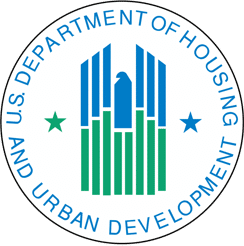The Reverse Mortgage Process
Getting a reverse mortgage doesn’t have to be complicated. We’ve broken the process down into four simple steps, and the experts at GoodLife will provide a helping hand along the way. You’ll enjoy an easy experience—with faster processing and lower rates**Based on data reported by lenders to the U.S. Dept. of Housing & Urban Development. Among the top HECM lenders (minimum of 100 loans), GoodLife Home Loans had the lowest adjustable rates on average for the period from January 1 through December 31, 2020.—so you can live better in retirement.

Consultation
Tell us about your goals and we’ll teach you about reverse mortgages to see if we can help.

Counseling
Meet with an independent counseling agency.

Application
We cut out the middlemen and streamline the process to save you time and money.

Funding
Choose how you’d like to receive your money and we’ll move fast to disburse the funds.
Step 1) Consultation
Find out how we fund your loan faster and at a lower rate. Learn all there is to know about how you'll get lower fees and costs because we cut out the middleman. And, most importantly, our reverse mortgage experts will give you the advice and information you need to help you decide if a reverse mortgage is right for you.
Step 3) Application
If you decide to move forward, we’ll help you fill out the reverse mortgage application to ensure no detail goes overlooked. At this time, we’ll verify your income, assets, and credit history, then we’ll arrange an appraisal to determine the value of your property and confirm it’s in a safe, working condition. Once we order the title and escrow, the loan is ready for approval.

Frequently Asked Questions About the Reverse Mortgage Process
Will my credit history affect whether I can take out a reverse mortgage?
Good credit isn’t a prerequisite when taking out or refinancing a reverse mortgage.
You meet the minimal requirements essential for taking out or refinancing a reverse mortgage loan if:
- You’re age 62 or older
- You own and live in the home as your primary residence
- You’ve built up substantial equity in the home
That said, you will have responsibilities with a reverse mortgage, such as paying the property taxes, homeowners insurance premiums and home maintenance expenses. A lender will run a credit report to determine whether you have the financial means to meet your obligations. If a lender determines you may have difficulty, they may require you to “set aside” a portion of the loan proceeds. This is a fairly common practice and is referred to as a Life Expectancy Set Aside (LESA). The LESA can provide peace of mind, since the borrower knows funds have been reserved to meet those obligations.
How long does the reverse mortgage process take?
What documentation will I need to provide for a reverse mortgage application?
There are four basic categories of documentation:
- Identity verification: Typically, a driver’s license or state-issued ID will prove sufficient to show the borrower is at least age 62.
- Principal address verification: Reverse mortgage loans are limited to the primary residence of a borrower, not second or vacation homes. Typically, the driver’s license is used to verify the borrower’s principal address, but bank statements, tax forms or a voter registration card can be used.
- Income verification: Lenders need documentation of income for maintaining the property and covering insurance and taxes. Common examples of this type of documentation include W-2 or 1099 tax forms, Social Security statements, and pension or retirement fund statements.
- Counseling certificate: The lender must verify the required counseling from a HUD-certified agency has been completed. (GoodLife provides a list of agencies from which to choose.)
How will lenders evaluate my reverse mortgage application?
Different types of reverse mortgage loans have their own requirements, such as a certain home value or the borrower’s ability to pay the property taxes, homeowners insurance premiums and home maintenance expenses.
How does a reverse mortgage appraisal work?
As with other real estate appraisals, a reverse mortgage appraisal includes:
- Visual inspection: the appraiser walks through the home to identify which features may enhance or detract from the home’s value. Appraisers often take photos and notes.
- Comparative analysis: after a visual inspection, the appraiser compares the home’s features to similar homes in the area to determine a comparative value.
- Formal documentation: the appraiser will deliver a final appraisal of the home’s value to both lender and borrower.
If a reverse mortgage is right for me, how do I get started?
We welcome the opportunity to guide you through the process. Our goal is to make it as easy for you as possible. Once we begin working together and you decide a reverse mortgage is right for you:
- First step is to review your proposal. Our proposals are packed with information that can be hard to decipher without the help of a reverse mortgage expert. We’ll be happy to answer any questions you have.
- Next step is for you schedule a counseling session with an unaffiliated agency. These sessions are designed as a safeguard, to make doubly sure that you are in a position to make a well-informed decision. We will follow up with you afterward.
- Final step is for us to get an application started. From there, our team will move as quickly as possible to close your loan.
Contact us today to learn more and get started.

 1-866-840-0279
1-866-840-0279

